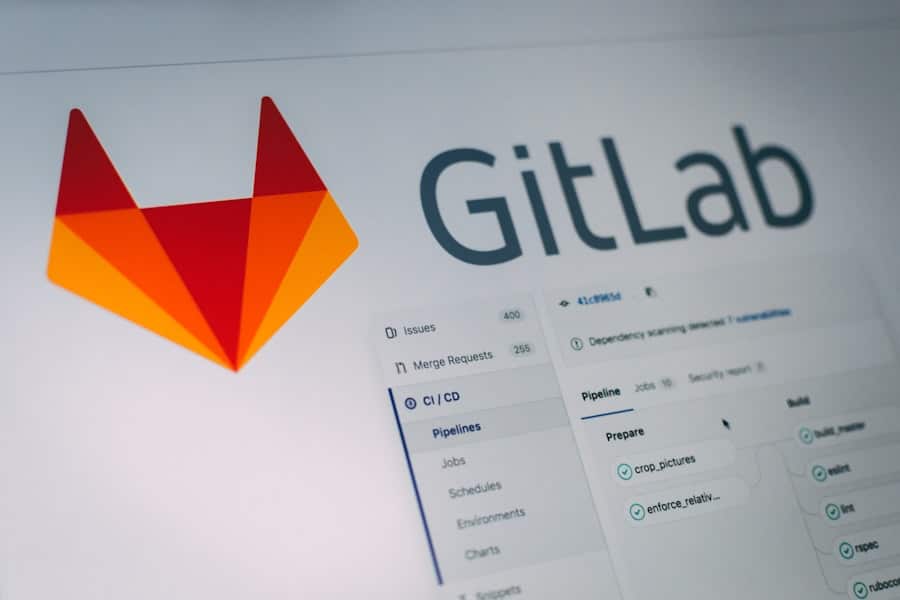No-code platforms have emerged as a revolutionary force in the software development landscape, democratizing the ability to create applications without requiring extensive programming knowledge. These platforms provide users with intuitive interfaces, often employing drag-and-drop functionality, which allows individuals to design and build applications visually. This shift has opened the doors for entrepreneurs, small business owners, and even large enterprises to develop software solutions that meet their specific needs without the traditional barriers associated with coding.
The rise of no-code tools has been fueled by the increasing demand for rapid application development, particularly in a world where agility and speed are paramount. The appeal of no-code platforms lies not only in their accessibility but also in their versatility.
Popular no-code platforms like Bubble, Adalo, and Webflow offer a variety of features that enable users to create functional and aesthetically pleasing applications. These platforms often come equipped with pre-built templates, customizable components, and integrations with various APIs, making it easier for users to bring their ideas to life. As businesses increasingly seek to innovate and adapt to changing market conditions, no-code platforms provide a viable solution for those looking to streamline their development processes and reduce time-to-market.
Key Takeaways
- No-code platforms allow users to build software applications without writing a single line of code, making it accessible to non-technical individuals.
- When identifying the right no-code platform for your SaaS product, consider factors such as ease of use, scalability, and integration capabilities.
- Designing and building your SaaS product on a no-code platform involves utilizing drag-and-drop interfaces and pre-built templates to create the desired functionality.
- Testing and iterating your SaaS product on a no-code platform is essential to ensure a seamless user experience and identify areas for improvement.
- Integrating third-party tools and services with your SaaS product built on a no-code platform can enhance its functionality and provide additional value to users.
Identifying the Right No-Code Platform for Your SaaS Product
Choosing the right no-code platform for your SaaS product is a critical step that can significantly impact your project’s success. The first consideration should be the specific requirements of your application. Different no-code platforms excel in different areas; for instance, if your SaaS product requires complex database management, platforms like Airtable or Knack may be more suitable due to their robust data handling capabilities.
Conversely, if your focus is on creating a visually appealing user interface, Webflow or Adalo might be better choices because of their design-centric features. Another important factor to consider is scalability. As your SaaS product grows, you may need to accommodate an increasing number of users and data.
Some no-code platforms are designed with scalability in mind, offering features that allow for easy upgrades and expansions. For example, Bubble provides options for scaling applications seamlessly as user demand increases. Additionally, consider the community and support available for each platform.
A strong community can provide valuable resources, tutorials, and troubleshooting assistance, which can be crucial when navigating the complexities of building a SaaS product.
Designing and Building Your SaaS Product on a No-Code Platform

Once you have selected the appropriate no-code platform, the next step is to begin designing and building your SaaS product. This phase involves translating your ideas into a functional application. Start by outlining the core features and functionalities that your product will offer.
Creating wireframes or mockups can be an effective way to visualize the user experience and interface before diving into the actual development process. Many no-code platforms provide built-in design tools that allow you to create these visual representations directly within the platform. As you begin building your application, take advantage of the platform’s pre-built components and templates.
These resources can significantly speed up the development process while ensuring that your application maintains a professional appearance. For instance, if you are using Bubble, you can leverage its extensive library of plugins to add functionalities such as payment processing or user authentication without having to code these features from scratch. Additionally, focus on creating a user-friendly interface that enhances the overall user experience; this includes ensuring that navigation is intuitive and that key features are easily accessible.
Testing and Iterating Your SaaS Product on a No-Code Platform
Testing is an essential part of the development process that should not be overlooked. Once you have built a prototype of your SaaS product on a no-code platform, it is crucial to conduct thorough testing to identify any bugs or usability issues. This can involve both functional testing—ensuring that all features work as intended—and user testing—gathering feedback from real users about their experience with the application.
Many no-code platforms allow you to create test environments where you can simulate user interactions without affecting the live version of your product. Iterating based on feedback is equally important. The agile nature of no-code development allows for rapid changes and improvements based on user input.
After gathering feedback from testers, prioritize the issues that need addressing and implement changes accordingly. This iterative process not only helps refine your product but also fosters a culture of continuous improvement, which is vital for long-term success in the competitive SaaS market. By remaining responsive to user needs and preferences, you can enhance user satisfaction and retention.
Integrating Third-Party Tools and Services with Your SaaS Product
One of the significant advantages of using no-code platforms is their ability to integrate seamlessly with third-party tools and services. This capability allows you to enhance your SaaS product’s functionality without having to build everything from scratch. For instance, if your application requires email marketing capabilities, you can easily integrate services like Mailchimp or SendGrid through available plugins or APIs provided by your no-code platform.
This not only saves time but also leverages existing technologies that are already optimized for performance. Moreover, integrating third-party tools can significantly improve your application’s overall value proposition. For example, incorporating analytics tools like Google Analytics or Mixpanel can provide valuable insights into user behavior and engagement metrics.
This data can inform future development decisions and marketing strategies. Additionally, payment gateways such as Stripe or PayPal can be integrated to facilitate transactions within your SaaS product, making it easier for users to subscribe or make purchases directly through your application.
Launching and Marketing Your SaaS Product Built on a No-Code Platform

Identifying Your Audience and Messaging
Start by identifying your target audience and crafting messaging that resonates with their needs and pain points.
Generating Buzz and Visibility
Utilize social media channels, content marketing, and email campaigns to generate buzz around your launch. Platforms like Product Hunt can also be valuable for gaining visibility among early adopters who are eager to discover new tools. In addition to digital marketing efforts, consider leveraging partnerships or collaborations with influencers in your industry who can help promote your product to their audience.
Incentivizing Early Adoption and Building Credibility
Offering limited-time promotions or discounts during the launch period can incentivize potential users to try out your SaaS product early on. Gathering testimonials and case studies from initial users can further bolster credibility and attract new customers as you continue to market your application post-launch.
Scaling and Growing Your SaaS Product with a No-Code Platform
As your SaaS product gains traction in the market, scaling becomes a primary focus for sustained growth. No-code platforms are designed with scalability in mind; however, it is essential to monitor performance metrics closely as user demand increases. This includes tracking server load times, user engagement rates, and overall application performance.
Many no-code platforms offer analytics tools that can help you assess how well your application is handling increased traffic and identify any bottlenecks that may arise. To facilitate growth, consider expanding your feature set based on user feedback and market trends. Regularly updating your application with new functionalities can keep users engaged and attract new customers looking for comprehensive solutions.
Additionally, exploring new marketing channels or geographic markets can help broaden your reach. Utilizing customer relationship management (CRM) tools integrated with your no-code platform can also streamline communication with users and enhance customer support efforts as your user base grows.
Maintaining and Updating Your SaaS Product on a No-Code Platform
Ongoing maintenance is crucial for ensuring the longevity and reliability of your SaaS product built on a no-code platform. Regular updates not only address bugs or security vulnerabilities but also introduce new features that keep your application competitive in an ever-evolving market landscape. Establishing a routine maintenance schedule can help ensure that updates are implemented consistently without disrupting user experience.
User feedback should continue to play a significant role in shaping future updates. Engaging with your user community through surveys or feedback forms can provide valuable insights into what improvements are most desired. Additionally, staying informed about advancements in no-code technology can help you leverage new features or integrations that enhance your product’s capabilities over time.
By prioritizing maintenance and updates, you can foster user loyalty and ensure that your SaaS product remains relevant in a dynamic digital environment.
If you are interested in launching a SaaS product using no-code platforms, you may also want to check out this article on the best software for creating house plans here. This article provides valuable insights into the tools available for designing and visualizing architectural plans. Additionally, you can enhance your content with NeuronWriter SEO NLP optimization, as discussed in this article here. Stay updated on the latest consumer technology breakthroughs by reading CNET’s coverage here.
FAQs
What are no-code platforms?
No-code platforms are software development tools that allow users to create applications without writing any code. These platforms typically use visual interfaces and pre-built templates to enable users to design and deploy applications quickly and easily.
What is a SaaS product?
SaaS stands for Software as a Service, which refers to a software distribution model where applications are hosted by a third-party provider and made available to customers over the internet. SaaS products are typically accessed through a web browser and are paid for on a subscription basis.
How can no-code platforms be used to launch a SaaS product?
No-code platforms can be used to launch a SaaS product by allowing entrepreneurs and businesses to quickly build and deploy custom applications without the need for traditional software development. These platforms provide the tools and resources necessary to create and manage SaaS products, including user interfaces, databases, and integrations with other services.
What are the benefits of using no-code platforms to launch a SaaS product?
Some benefits of using no-code platforms to launch a SaaS product include:
– Rapid development and deployment of applications
– Lower costs compared to traditional software development
– Accessibility for non-technical users
– Flexibility to iterate and make changes quickly
– Integration with other tools and services
What are some popular no-code platforms for launching SaaS products?
Some popular no-code platforms for launching SaaS products include:
– Bubble
– Webflow
– Adalo
– Airtable
– Appgyver
– OutSystems
– Mendix
– Quick Base

